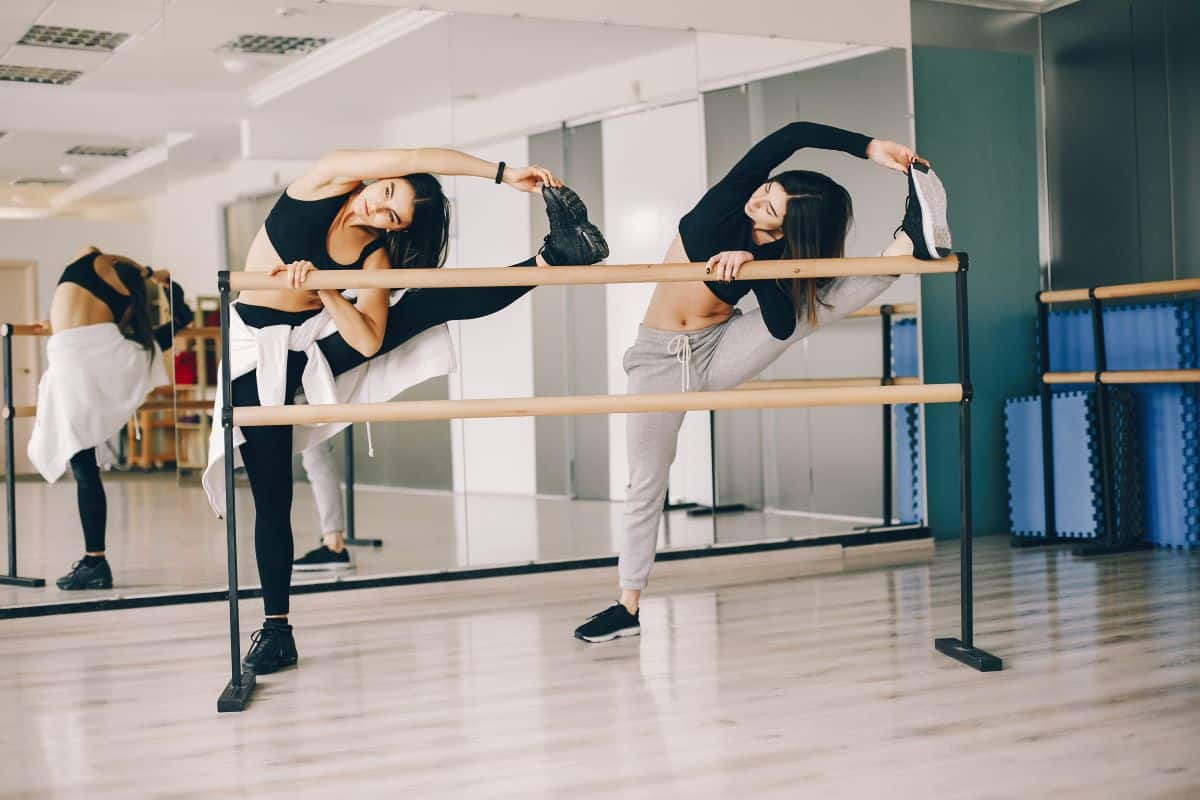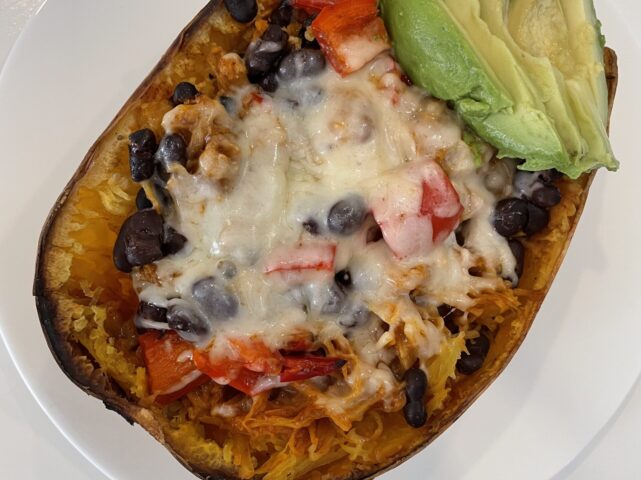Nutrition Essentials for Dancers: Fueling for Performance and Health

By Paige Mandel, MS RD CDN
Many sports highlight nutrition for performance and endurance, yet dance is one that is less-so discussed. Diet culture tends to infiltrate the dance industry heavily, with extreme focus on a lean physique, constant viewing of mirrors and an expectation of body confidence. There are many aspects of nutrition that largely impact a dancer’s performance, stamina, and prevent injuries. Focus must shift away from calorie counting and restriction, and lean in towards fueling the body adequately.
Sports like dance that emphasize low body weight for optimal performance are associated with an increased prevalence of disordered eating, and the female athlete triad (FT).1 The female athlete triad “is defined as a spectrum disorder of three interrelated components: (1) low energy availability due to disordered eating, eating disorder, or lack of nutrition relative to caloric expenditure; (2) menstrual dysfunction; and (3) low bone mineral density (BMD)”.2 This makes factual nutrition knowledge for this population even more important. It is essential to check the facts (from a Registered Dietitian, not a social media influencer) and truly understand how to eat as a dancer, not only to optimize performance but to fuel overall health and prevent medical complications/injury as well.
What Should a Dancer’s Diet Look Like?
Balanced, Consistent, and Enough! A dancer’s diet should look like a balance of carbohydrates, proteins, and fats. While this is true of a balanced diet for any person, athletes and non-athletes alike, it is especially key for dancers who are consistently undergoing intense movement resulting in the need for adequate fuel and re-fueling of the muscles. Consistency of intake plays a large role in optimal nutrition for dancers to sustain the high energy needs of performance and prevent fatigue. Lastly, making sure to meet the caloric demands of both high and low intensity dancing is empirical to a healthy dancer.
Why Carbs?
For immediate and long-term energy + preventing muscle breakdown. Nutrition 101 in short: carbohydrates are the body’s most efficient source of energy and preferred fuel. Carbs break down to sugar (glucose) to be utilized by the body either immediately to sustain energy balance or stored as glycogen in your liver and muscles. These glycogen stores are used to fuel activity and could be quickly depleted. In order to replenish these stores, we need carbohydrates consistently throughout the day. Additionally, carbohydrates have a protein sparing effect- this means that “as long as there are adequate amounts of carbohydrate in the diet, protein will function to build and repair muscle tissue rather than being diverted to supply the body with energy”3. This means preventing muscle breakdown- SUPER important for dancers. Therefore, to replenish our muscle glycogen stores that are being used through dancing activities (practices, trainings, classes, performances, competitions etc.) carbohydrates must be eaten consistently in meals and snacks throughout the day. Complex carbohydrates (i.e. whole grains, legumes, starchy veggies) will provide longer term sustenance and blood sugar balance due to the presence of fiber, and simple carbohydrates will provide a quick burst of energy often needed before or during long bouts of activity. It is recommended dancers consume 55-60% energy intake from carbs4.
Why Protein?
For muscle building, repairing and preventing muscle breakdown. Protein is essential to sustain the muscle bearing actions of dance, to build muscle, support immune function, regulate hormone and enzyme production and maintain blood sugar control. The muscles of a dancer are significantly stressed by such constant use, requiring adequate protein needs for repair. Almost half of the body’s protein is stored in skeletal muscle, therefore if the body does not receive enough fuel, the muscles begin to breakdown in order to supply the body with amino acids for energy production. This phenomenon also then “re-routes” the function of protein from building and repairing muscle to providing the body with energy, resulting deterioration of muscle mass and thus strength. It is recommended dancers consume 1.2 to 1.7 g protein/kg per day, including a variety of quality protein sources5. If you adhere to a vegetarian or vegan lifestyle, it is important to consult with your dietitian to discuss how to best meet these needs.
Why Fat?
To sustain energy (stamina), support muscle function, achieve satiety, and decrease inflammation. Fat supports organ and joint structure and function as well as aids in the absorption of fat soluble vitamins (A, D, E, K)3. Additionally, dietary fat is an essential component of all cell membranes, and hormones that regulate blood pressure, heart rate, inflammation and the nervous system3. While often demonized in diet culture, fat is crucial to a healthy diet to supply the body with energy and promote satiety. Fat is the primary fuel for endurance exercise, thus dancers require an adequate amount of fat (a balance of omega-3s and omega-6s) to undergo long rehearsals, classes and performances. Omega 3 fatty acids are found in foods such as avocados, nuts, seeds, olive oil, fatty fish. Omega 6 fatty acids are found in soybeans, corn, safflower and sunflower oils, nuts and seeds. It is recommended dancers consume 20 to 35% of energy intake from fat5.
Additional micronutrients to consider: iron, calcium and vitamin D – all essential for optimal bone density and muscle repair5.
Consistency.
In order to achieve optimal nutrition and metabolic function, dancers should aim to eat consistently throughout the day, before, possibly during, and directly following performance. This will help maintain blood sugar levels to provide the body with stable, consistent energy to prevent energy spikes and crashes. Additionally, consistency will help prevent fatigue and aid in muscle repair to delay soreness and burnout.
With such noise in the health and fitness space it could be difficult to navigate what it means to properly fuel your body, especially as a dancer. If you have questions about nutrition for dance performance, and how to best meet your needs, talk to a dietitian at Laura Cipullo Whole Nutrition. We can help you create a realistic plan to maximize your nutrition for your sport while also considering your busy lifestyle and other commitments.
References:
- Doyle-Lucas AF, Akers JD, Davy BM. Energetic efficiency, menstrual irregularity, and bone mineral density in elite professional female ballet dancers. J Dance Med Sci Off Publ Int Assoc Dance Med Sci. 2010;14(4):146-154.
- Chamberlain R. The Female Athlete Triad: Recommendations for Management. Am Fam Physician. 2018;97(8):499-502.
- Winning the War Within, 3rd edition 2020. Helm Publishing. https://www.helmpublishing.com/products/winning-the-war-within-3rd-edition-2020
- Why Dancers Need the Best Nutrition for Their Performances. Verywell Fit. https://www.verywellfit.com/the-importance-of-nutrition-for-dancers-617328
- Sousa M, Carvalho P, Moreira P, Teixeira VH. Nutrition and nutritional issues for dancers. Med Probl Perform Art. 2013;28(3):119-123.







